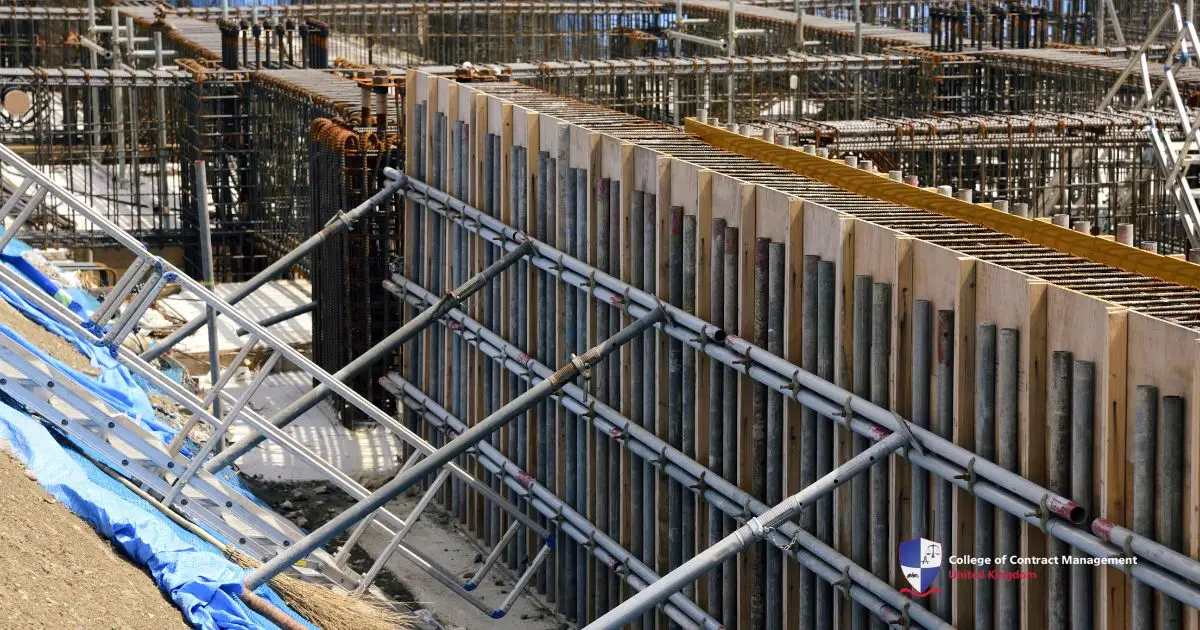A chemical anchor is a technique for binding to concrete and similar substrates that provides greater flexibility than mechanical anchors. When it comes to construction and structural stability, the choice between this type of anchoring and traditional anchoring plays a key role. Both methods are employed to secure the structure.
Chemical anchor is one of the most chosen options available when you need to install a stud or anchor into concrete. Engineers create a hole by drilling the concrete before injecting a resin into the hole using the chemical, and then putting it into the fixing stud. Which creates an incredibly strong anchoring point. This application is where the walls are irregular or fixing points are close to an edge, and therefore at risk of failure. This is where we are going to delve deeper into how it all works.
What is a chemical anchor?
A chemical anchor is a type of post-installed anchor used to secure fasteners into hardened substrates such as concrete, masonry or stone. We are going to delve even further into what this type of anchor is exactly. Unlike mechanical anchors, which rely on friction. On the other hand, it works by injecting a two-component resin into a pre-drilled hole.
The process is explained above, evenly spreading the load along the entire length of the hole, creating a bond that is often stronger than the material itself. These traits make this type of anchoring quite ideal for uses requiring high loads, close edge distances, or group fixings. Thus, this is such a versatile and good anchor to use when any other type is not ideal.
As well as their strength and versatility, a chemical anchor gives huge benefits. With its rust resistance properties and being able to dampen vibration. Their ability to form a bond without applying stresses to the wall, avoiding damage and reducing the risk of cracking. Above all, this type of anchor provides a reliable and durable solution that adapts well to a variety of applications, ensuring a secure and long-lasting connection even in the worst conditions.
Types of chemical anchor
A chemical anchor is a system that bonds elements to concrete, masonry or stone using formulated resins. These resins come in many different types, for example, epoxy, vinyl ester and polyester, each tailored to different uses. It is key to know the environmental conditions and load requirements to find the correct type of epoxy.
These anchors offer unique benefits, including high load capacity and resistance to vibration and corrosion. The versatility makes them ideal for both safety and structural or even everyday installations. There are several types of resin compounds used in a chemical anchor, each selected based on the specific application, material and load requirements:
1. Polyester resin
Polyester resin is an ideal type for construction applications, including solid and semi-hollow bricks, hollow blocks and non-cracked concrete. This is one of the main reasons that most chemical anchors are used. It does well under mid-working loads and is suitable for non-critical uses, especially for home use. Also, it is effective on wet substrates and dry internal structures. It offers such great versatility when used with metric threads. Its compliance with all EU standards makes it a popular choice for metallic structures, signage, urban features, and many other uses. As such, this is still one of the most popular types of resin.
2. Styrene-free polyester resin
With a similar type to polyester resin, this type of chemical anchor resin is very suitable for a wide range of building materials. Engineers use this resin mix to handle medium loads in both wet and dry conditions. Because it is styrene-free, professionals prefer it for environmentally sensitive projects, especially those involving organic materials.
All styrene-free resins are designed for safety in confined workspaces. This is quite suitable for use in submerged holes. Well, except in seawater, and ideal for metric threads. With its compliance with all EU standards. It is mostly used in wooden structures, signage, urban furniture and much more.
3. Styrene-free epoxy-acrylate resin
Epoxy acrylate resin works perfectly on damp or slightly damp surfaces and usefully bonds with solid masonry, dry or wet concrete, aerated concrete, wood, and other high-strength materials. This type of chemical anchor offers a wide range of uses in various construction projects. This type of resin is mostly used in industrial applications and in machining.
Being able to withstand medium to high loads, this resin is ideal for that use. With threads and rods, it demonstrates excellent performance in submerged holes, except in seawater. The main uses of this resin are for buildings made of metal, machines and much more. With its compliance with all EU standards, this is a great use for this resin.
4. Styrene-free vinyl ester resin
Finally, one of the most versatile options available, this type of resin is perfect for a chemical anchor. Thus, it's perfect for solid and semi-hollow bricks, hollow blocks, cracked and uncracked concrete, aerated concrete and wood. Being similar to epoxy acrylate resin, it can be used with metric thread and corrugated rods and is effective in submerged holes, except in seawater.
Its high load-bearing capacity makes it ideal for extending concrete structures. On top of that, it offers optimal performance in various environmental conditions due to its insulating properties. With its main uses of facade structures, guard rails and much more. Being compliant with all EU standards, it is one of the most popular types of resin.
How does a chemical anchor work?
They inject a resin hardener mixture into a hole that they previously drilled into the concrete. Which then cures and chemically bonds the anchor rod to the substrate. In construction, engineers primarily use this type of anchoring, a two-component anchoring system, to secure structural parts such as rebar, threaded rods, or bolts. Thus, it is to secure the elements to concrete, masonry or stone. Unlike traditional materials, which rely on expansion forces. Chemical anchor creates its strength through a chemical reaction that bonds the metal element to the base material. We are going through the step-by-step process:
- Drilling the hole: The team drills a hole into the wall with the set diameter and depth. Precision is key to making sure the chemical anchor works.
- Cleaning the hole: After drilling, the crew cleans the hole to remove dust, debris, and water, ensuring the anchor adheres more effectively.
- Injecting the chemical adhesive: Engineers inject a two-part resin, typically epoxy, polyester, or vinyl ester, into the hole. This resin creates a strong bond between the wall and the anchor material.
- Inserting anchor: Next, they push a metal rod, threaded insert, or rebar into the resin-filled hole, allowing the resin to spread around the anchor's surface and distribute the load.
- Curing: Finally, the chemical anchor cures over time. Once fully cured, it forms a robust integral bond between the anchor and the substrate.
Conclusions
Chemical anchor is a high-performance, versatile solution ideal for securing stuff in concrete, metal and stone. Thus, builders often choose it as a key option when they start construction projects. It delivers superior load distribution, excellent rust resistance and effective vibration damping, making it easy to prevent damage to the material. Its simple installation and durability make it a key opponent in construction, ensuring secure and long-lasting connections.
To learn more about the intricacies of construction and materials, you can join the College of Contract Management. Gaining mastery over a subject can lead to a huge opportunity as well. You can even consider taking some professional courses. Besides education, it offers other courses to improve skills in other fields. With that, you will stand out as a professional and get a better job. So, wait for what? Enrol today and get ready for future career growth with CCM!





